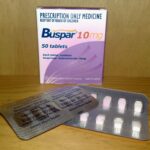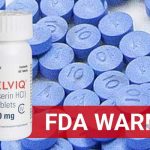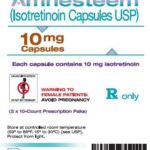Why Was Kenalog Taken Off The Market?

Triamcinolone is a glucocorticoid that is more commonly known by the brand names Kenalog-10 Kenalog-40, Aristocort, Aristocort Forte, Aristospan, Clinacort, Triamcot, Triam-Forte, and Triesense.
Kenalog is used to treat inflammation (swelling), allergic reactions, certain types of arthritis, gout, skin diseases, and many other medical problems. Triamcinolone was patented in 1956 and came into medical use in 1958. In 2019, it was the 107th most commonly prescribed medication in the United States, with more than 6 million prescriptions.
Kenalog was first approved by the Food and Drug Administration (FDA) in 1958, so it’s been around for a long time. It is available as an injection but it is also available in topical forms (creams, lotions, ointments), nasal spray, dental paste. It works by controlling inflammation and calming overactive immune systems.
Is Kenalog Banned?
No, Kenalog is not banned as a medication. However, triamcinolone the active ingredient in Kenalog is classified as an S9 glucocorticoid in the 2014 Prohibited List published by the World Anti-Doping Agency, which caused it to be prohibited in international athletic competition when administered orally, intravenously, intramuscularly, or rectally.
Why was Kenalog taken off the market?
Kenalog is off the UK market because, in October 2019, regulators withdrew the drug’s license to be used as a hay fever treatment in the UK. The National Health Service a publicly funded healthcare system in England, had previously warned against the use of Kenalog for more than a decade due to the risk of side effects such as a life-threatening allergic reaction in some people called anaphylaxis, hypertension, and increased susceptibility to infection. Kenalog may also delay growth in children.
What are the other side effects of Kenalog?
Kenalog can cause any of the following side effects:
More common
• aggression
• agitation
• anxiety
• blurred vision
• decrease in the amount of urine
• dizziness
• fast, slow, pounding, or irregular heartbeat or pulse
• headache
• irritability
• mental depression
• mood changes
• nervousness
• noisy, rattling breathing
• numbness or tingling in the arms or legs
• pounding in the ears
• shortness of breath
• swelling of the fingers, hands, feet, or lower legs
• trouble thinking, speaking, or walking
• troubled breathing at rest
• weight gain
Incidence not known
• abdominal cramping and/or burning (severe)
• abdominal pain
• backache
• bloody, black, or tarry stools
• cough or hoarseness
• darkening of the skin
• decreased vision
• diarrhea
• dry mouth
• eye pain
• eye tearing
• facial hair growth in females
• fainting
• fatigue
• fever or chills
• flushed, dry skin
• fractures
• fruit-like breath odor
• full or round face, neck, or trunk
• heartburn and/or indigestion (severe and continuous)
• increased hunger
• increased thirst
• increased urination
• loss of appetite
• loss of sexual desire or ability
• lower back or side pain
• menstrual irregularities
• muscle pain or tenderness
• muscle wasting or weakness
• nausea
• pain in back, ribs, arms, or legs
• painful or difficult urination
• skin rash
• sleeplessness
• sweating
• trouble healing
• trouble sleeping
• unexplained weight loss
• unusual tiredness or weakness
• vision changes
• vomiting
• vomiting of material that looks like coffee grounds
Some side effects may occur that usually do not need medical attention. These side effects may go away during treatment as your body adjusts to the medicine. Also, your health care professional may be able to tell you about ways to prevent or reduce some of these side effects. Check with your health care professional if any of the following side effects continue or are bothersome or if you have any questions about them:
Incidence not known
• Blemishes on the skin
• bruising
• dry, scaly skin
• feeling of constant movement of self or surroundings
• full or bloated feeling
• increased appetite
• increased hair growth on the face, forehead, back, arms, and legs
• large, flat, blue, or purplish patches in the skin
• pimples
• pitting or depression of the skin at the injection site
• reddish purple lines on the arms, face, legs, trunk, or groin
• redness of the skin
• redness, swelling, tenderness, or pain at the injection site
• sensation of spinning
• small, red, or purple spots on the skin
• thin, fragile, or shiny skin
• thinning of the scalp hair
Other side effects not listed may also occur in some patients. If you notice any other effects, check with your healthcare professional.
Call your doctor for medical advice about side effects. You may report side effects to the FDA at 1-800-FDA-1088.





